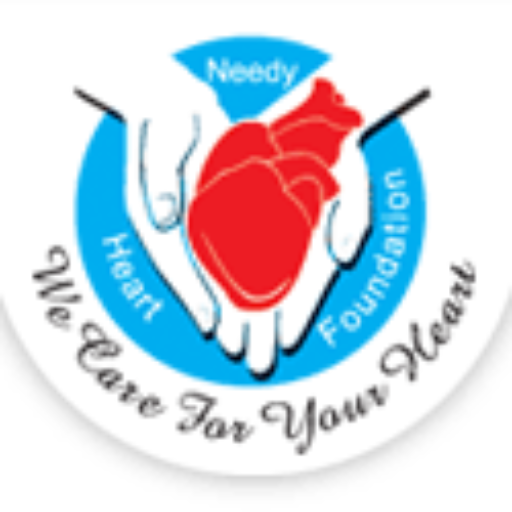Rotary Needy Homograft Bank (RNHB)
– a joint venture of Rotary Bangalore Indiranagar, Needy Heart Foundation and Manipal Hospital
What is Homograft heart valve?
It is a valve tissue harvested from either brain dead donors or cadavers within 24 hours of death. Usually aortic, pulmonary and mitral valves can be harvested. These valves are processed and stored for use in treating various complex heart problems.
Tissues harvested like this are essential to treat a significant proportion of complex heart diseases in children and adults. In fact some of the heart problems especially in children cannot be treated without the availability of such homografts. Even though some alternate valves and conduits are available in the market, they are very expensive and are beyond the reach of common man.
India being the second most populous country in the World, it also has highest number of heart patients in the World. Every year around 160,000 children are born with heart problems, but only about 6000 children get some type of surgical treatment. The rest slowly die for want of adequate funds or awareness.
Why are Homografts required:
Homograft valves are required for the surgical treatment of various complex heart problems especially in children. Following are a few important areas of its usage.
- Complex congenital heart diseases like Pulmonary atresia, Double outlet right ventricle, Truncus arteriosus, some subset of Transposition of great arteries etc will require homografts to establish continuity of blood flow from chambers of the heart to the great arteries. Non-availability of appropriate sized Homograft will make surgical treatment almost impossible.
- Complex Valve operations like Ross procedure, which will not only avoid mechanical valves and anticoagulation but, also will give best haemodynamics and resistance to infection.
- Best valves to replace infected valves- both native and mechanical.
- Can be used as conduits in aortic surgeries
Homograft Heart Valve Bank-Indian scenario:
Till recently, in India, there has been no planned initiative taken by either the Government or the Private sector to establish such a program on a larger scale, to benefit the community. It is reported that there are at present 5 units in India where Homograft heart valve programs are running. But they are limited to their own hospitals. Only three including this unit amongst five, have cryo preservation facility to store homografts for longer duration.
Since the availability of cadaver heart donors is limited in India because of religious beliefs wastage of available homografts due to lack of long-term facility is totally unacceptable. Hence the Needy Heart Foundation which is supporting the cause of treatment of underprivileged cardiac patients especially children and women, took up the responsibility of establishing a non-profit Homograft heart valve bank to ensure supply of Homograft in this region. This has been made possible with the support of Rotary Club of Bangalore Indiranagar and Manipal Hospital.
The Project
This Homograft Bank is an initiative for the cryo-preservation unit for the Homograft heart valve bank being run by a charitable organization for the first time in India.
Considering the high cost involved in the project, Needy Heart Foundation, in association with Rotary Club of Indiranagar (RBI) and Manipal Hospital (MH) joined hands together & established this Bank at MH.
Method of harvesting and processing of homograft:
Source
Fresh cadavers (< 24 hours after death) free from infection, malignancy and structural heart disease. A written, informed consent is must.
Procurement of the heart
The heart and the great arteries are harvested from the cadavers by aseptic technique in the mortuary, washed in normal saline, transferred to cold Hanks balanced salt solution with antibiotics in a sterile air tight jar. This in turn is kept in a cold box and transferred to heart valve dissection unit. A sample of blood from the donor is also sent along with for necessary blood tests.
Harvesting the Homograft
This is done in a sterile atmosphere under laminar air flow unit by the doctor or trained physician assistant. With aseptic technique the heart is removed from the cold antibiotic solution, washed with normal saline and studied under magnifying loupe to rule out gross abnormalities. If found suitable aortic and pulmonary valves along with the corresponding arteries are harvested, checked and sized. They are then transferred to cold Hank’s balanced salt solution with antibiotics for sterilization in a sterile jar. Bits of heart tissue are also taken for the purpose of culture. The jar is stored at 40 C.
Serological and microbiological tests
HIV, HbsAg, HCV, VDRL, TPHA Bacterial culture of the bits from heart
Sterilization of the Homograft
By serial transfer into antibiotic solution at 24 hrs interval for 4 days.
- Storage
2)By cooling to –1800C using liquid nitrogen and storing at same temperature in sealed sterile double packs of aluminium, homografts can be preserved for 2 to3years
(Cry preservation).
Antigenicity
Even though some HLA antigens are demonstrated on preserved homografts, they rarely produce clinically important rejection. Hence blood group matching or tissue typing is not recommended for Homograft implantation.
Current Status of the Project:
The Project is running to its full capacity for the last six years. The Bank has currently a stock of 25 heart valves of different sizes. The Homograft Banks are given free of charge to any Hospital in India or abroad provided the cost of transportation is borne by the receiver. Besides use in Manipal Hospital, the valves have been used by Fortis, Narayana Hrudayalaya and Jaydeva Hospitals.
Besides many RIDs & PDGs, VIPs from Rotary International like Robert Scott-Chairman TRF (2008), Thomas M. Thorfinnson – R I Vice President (2009) and Ms Agne Jankauskaite –Grant Coordinator Humanitarian Grants Program-The Rotary Foundation (2010) visited and lauded the usefulness of the Project.
O P Khanna
